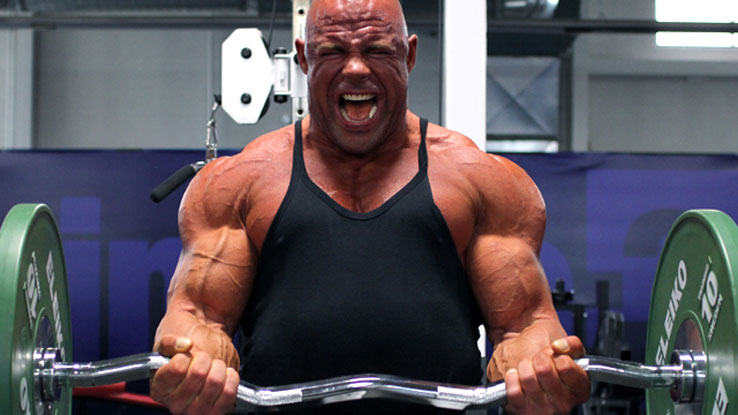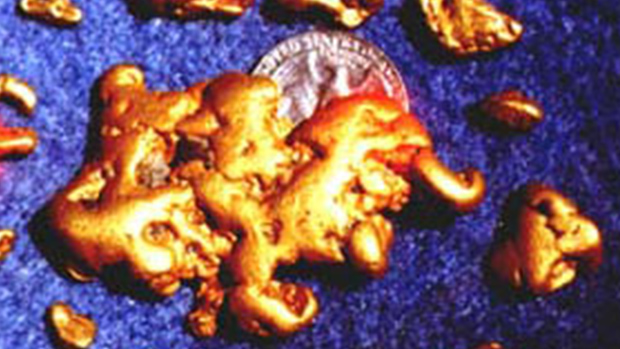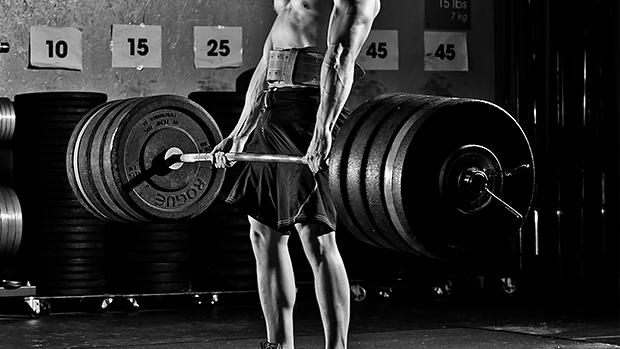The 411 on GPP
I can remember when I was a kid growing up and playing street ball, baseball, football, soccer, and a number of other games we just made up. On any given day there was something going on. Now when I drive through a neighborhood I fail to see the same games being played. The physical activities have been replaced with computer games and the Internet. So what does all this have to do with training? Well, in some respects, everything.
The ability to compete on a given day is known as your level of preparedness. This is determined by your level of fitness, which is in turn dependent upon your work capacity. So all training is based upon increasing work capacity, and you can't build a high level of preparedness without a high work capacity.
The solution to this sounds fairly simple: do more work and your work capacity will go up. The problem is that if you increase the work too quickly your progress will go backward. If you don't increase it enough then you'll stagnate. The work capacity has to be increased with a fine balance between general physical preparedness (GPP) and special physical preparedness (SPP).
SPP concentrates only on those exercises that are more specific to the sport of choice. GPP is intended to provide balanced physical conditioning between all the fitness components such as flexibility, strength, endurance, speed, and other factors. You see, the games we played as kids helped us to develop a certain level of GPP. While this level wasn't enough to become a world-class athlete, it was still worth something. Nowadays, college strength coaches see athlete after athlete with poor mobility because of shortened hip flexors. This is probably caused by the years these athletes spent sitting on their asses in front of the TV. They're athletes, yes, but their levels of GPP are poor.
According to Yuri Verkhoshansky in The Fundamentals of Special Strength Training in Sport and as outlined in Supertraining by Mel C Siff, there are several functions of GPP:
- To form, strengthen or restore motor skills, which play an auxiliary, facilatory role in perfecting sports ability.
- To teach abilities developed insufficiently by the given sport; increase the general work capacity or preserve it.
- To provide active rest, promote restoration after strenuous loading, and counteract the monotony of training.
Many coaches and athletes don't believe in the benefits of GPP at all. Who are the worst offenders? Are you sure you want to know? Bodybuilders and powerlifters are by far the worst! They feel that all they have to do is train the main lifts to get strong. This is why so many of them are out of shape.
I was first introduced to the concept of GPP a few years ago when Louie Simmons and I made a trip to Pittsburgh to watch John Davies train several of his athletes. John is a speed coach who was working with several players in Pittsburgh at the time. I weighed about 305 with a 2100 pound total at the time of this trip. My total was moving up but only by about five or ten pounds each competition. I knew I was missing something but didn't know what it was.
John was talking about how he'd never met an American player who couldn't benefit from added GPP. He said that just about every player he'd worked with was out of shape. American coaches, he said, were too quick to do specialized drills or movements before developing a solid base fitness level. Others athletes fail to maintain their fitness levels as they move through the ranks.
As we spoke I began to wonder if I'd lost my fitness level over the years. I'd spent the last few years force feeding myself to get my weight up and I only did those things I felt necessary in training. I didn't want to burn any more calories then I had to. At about this time we decided to go to lunch. The lunch hall was about a fourth of a mile away and up hill. John decided we would walk. Even though we could see the hall I still wanted to drive. About halfway up the hill I started to feel like I was going to die. By the time we got to the top I was soaked in sweat and beet-red. I thought my heart was going to pound through my chest. My question about GPP was answered.
My GPP was terrible and I was not only out of shape, I was way out of shape! I used to think this was how you had to be if you wanted to lift big weights. What the hell do I need to be in shape for if all I have to do is lift a weight that takes three to five seconds to complete? On the way home Louie and I came up with a plan. We knew endurance training (bike, treadmill, etc.) wasn't the ticket because it wasn't bringing up any weak points and not specific enough to our sport. We had to find a way to increase GPP while bringing up weak points.
The Solution: Sled Dragging
I decided to add in sled dragging six days a week with a few extra workouts. Louie had been doing these extra workouts for about a year and I just dismissed them as a waste of time. But the dragging sled could be used as a means of increasing work capacity. The use of a sled has many benefits:
- The sled is easy to use and doesn't require a special trip to the gym.
- The sled is specific to the development of the special skills necessary for maximal strength. (And by the way, we never run with the sled.)
- Many movements can be trained with the sled, some of which are listed below. There are movements for the abdominals, shoulders, hamstrings, etc. Virtually every muscle can be trained with a sled.
- The sled is a great way to induce active restoration. In many of the upper body dragging movements, the eccentric is eliminated because of the nature of the sled. This in turn is great for recovery because the tearing down of the muscle is much less in concentric-only movements.
My training schedule before was as follows:
- Monday: Max effort squat/deadlift day
- Wednesday: Max effort bench press
- Friday: Dynamic effort squat day
- Sunday: Dynamic effort bench day
The new schedule would be built to bring up my weak points, namely my abs and hamstrings. The new schedule looked like this:
Monday
AM: Max effort squat/deadlift day
This is the main training workout utilizing the method of maximal exertion followed by supplemental and accessory movements for the squat and deadlift. (See my past articles at T-mag if you're not familiar with Westside training.)
PM: Sled dragging, extra abdominal work and GHR (glute ham raise)
This is an extra workout I added to increase my work capacity. The sled work during this cycle was performed utilizing the empirical rule of 60% (see below). My abdominals have always been a weak point so extra abdominal work was also added into the weekly cycle..
Tuesday
Sled dragging
The main focus of this workout is restoration. I'll give a sample workout below.
Wednesday
AM: Max effort bench press
This is the main bench press workout utilizing the method of maximal exertion followed by supplemental and accessory movements.
PM: Sled dragging, extra abdominal work and pec-delt tie in
The goal of this training session is much like the goal of the PM session on Monday. Since I've torn both pecs, I added in some special movements to strengthen the pec-delt tie in region.
Thursday
Sled Dragging, abdominal work
Again, the main focus of this workout is restoration.
Friday
AM: Dynamic effort squat day
This is the main training day for the squat, utilizing the dynamic effort method. The box squat would be trained followed by supplemental movements for the squat and deadlift. No changes were made during this workout.
PM: Sled dragging, extra abdominal work and GHR
This workout was designed to suit the same purpose as the Monday PM workout.
Sunday
Dynamic effort bench day
This is the main training day for the bench press, utilizing the dynamic effort method. The bench press would be trained, followed by supplemental movements for that lift. No changes were made during this workout.
Sample Sled Dragging Movements
Around the waist forward dragging
This could be classified as the king of all dragging exercises. Run a nylon strap through the sled with the other end attached to a weight belt. Keep the belt one notch loose to allow for you to pull in and expand your belly as much as possible. This will allow you to better push your abdominals against the belt in the same fashion we advise for the power lifts.
As you walk forward do so in an explosive, dynamic motion, driving into the belt as you step. You should hear the forces snap the sled with each step. This is much different than just walking forward. This type of dragging is great for the development of the hamstrings and glutes.
Ankle dragging
This movement is great for the hip flexors and hamstrings. To perform it you'll need to attach one nylon strap to the sled and pass a second through the first for a "T" shape. Tie or loop the end of the second strap around each ankle.
Start the motion in a split stance position and pull the back leg forward with a slight bend in the knee. Concentrate on using the hip flexors and abdominals, not the quads. This movement has had a profound difference on many lifters I've consulted. It teaches them how to use their abdominals in a way that's conducive to doing the squat.
Rope dragging behind the knees
This style of dragging will pulverize your hamstrings. Attach the strap to the sled. Run a rope or another nylon strap through the first. Face away from the sled and grip the second strap behind your knees with a close stance. Stay in this semi-squatted position and walk forward.
Front raises
This has been one of the best and most successful things I've ever seen for sore and damaged shoulders. It's helped more lifters get back to the bench than any other movement. Attach one strap through the first in the same manner as the ankle dragging. Face away from the sled and grab one strap in each hand and walk forward while simulating a dumbbell front raise with the straps.
Rear raises
This movement is performed the same as the front raise except you'll be walking backwards and performing a rear raise. The benefit to these front and rear raises is that the loading during the eccentric phase is taken away. What you're left with is a concentric-only activity that causes little to no soreness.
Sample Dragging Workouts
Dragging for restoration
The basic guideline for restoration dragging is to keep the load light and drag for a greater distance. The best distance I've seen for this type of loading is 200 feet. A sample restoration workout is as follows:
- Around the waist dragging: 90 pounds for 200 feet, rest 30 seconds and return. This movement would be performed for four trips. (One trip equals 200 feet.)
- Front Raises: Two trips, 200 feet with 35 pounds
- Rear Raises: Two trips, 200 feet with 35 pounds
- Ankle dragging: Two trips, 200 feet with 35 pounds
Dragging for strength
The best type of loading for strength is to drag increasingly heavier weights for a shorter distance. The best distance we found for this is 100 feet. A sample strength workout would look like this:
- Around the waist dragging: Begin with 45 pounds and drag for 100 feet. Rest 30 to 45 seconds and return. Rest another 45 seconds and add another 45-pound plate. Keep with this same distance and continue rest and loading pattern until your body tells you to stop. When it comes to strength dragging, one movement per workout is plenty.
- Dragging using the empirical rule of 60%: The empirical rule of 60% is one of the best ways to induce active restoration in the course of a micro cycle. The best way to see how this system works is to look at an example of how it's used:
- Day 1: Front raise dragging: 100 pounds for two trips of 100 feet.
- Day 2: Front raise dragging: 60 pounds for two trips of 100 feet. You'll notice the weight is 60% of the weight used on day one.
- Day 3: Front raise dragging: 36 pounds for two trips of 100 feet. This time you'll notice the weight is 60% of the weight used on day two.
These 60% drops are responsible for inducing a means of active restoration. Restoration should be used in cycles throughout the year coupled with the heaviest loading phases. You don't want to make restoration measures part of a yearly cycle because it's important for the body to get sore and beat down at certain times throughout the year. This is part of the training process we all accepted a long time ago. You do, however, want to go into a meet as fresh as possible.
Summary
I've presented just some of the possible GPP and restoration movements. It's worked wonders for us at Westside and for the athletes I train. The added GPP and hamstring development has improved many of our deadlifts and the upper body work has helped more shoulder problems caused by overtraining than anything else we've tried.
For more information on these movements or any of the others we perform, contact us at EliteFitnesssystems.com or call 888-854-8806. We also provide a quality sled and straps made for these types of movements.
If you'd rather make your own sled you can always get a used tire, cut a piece of plywood to fill the center, then load rocks or other weight on top of it. For straps you can either use a rope or call me for the straps we had made for ours. (We have them made with extra large loops so you can get your feet through.)
Good luck dragging yourself into shape!





